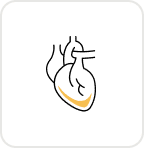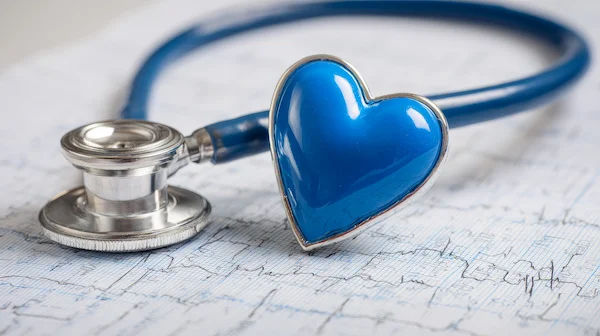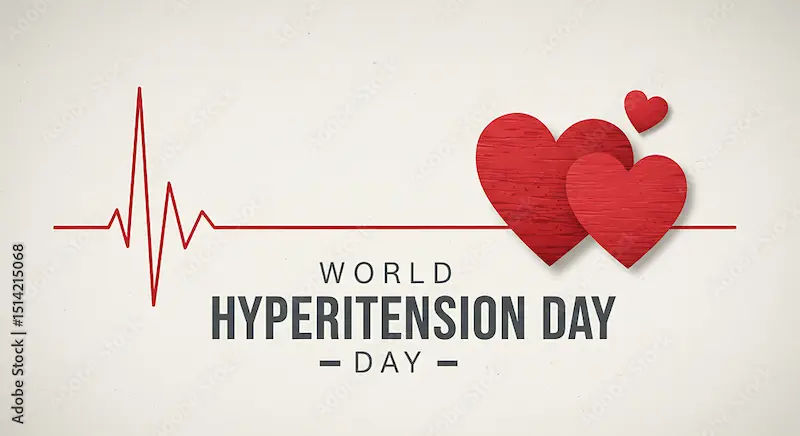Guide to Hypertensive Heart Disease
Know about the hypertensive heart disease, types of hypertensive disease, symptoms, how it works, diagnosis, prevention, myths, facts and monitoring. Learn about the role of nutrition, exercise and more.

Written by Dr. J T Hema Pratima
Reviewed by Dr. Rohinipriyanka Pondugula MBBS
Last updated on 21st Oct, 2025
.webp?tr=q-80,f-webp,w-350,dpr-2,c-at_max 700w)
Introduction
Hypertensive heart disease happens when long-standing high blood pressure puts extra strain on your heart and blood vessels. Over time, that pressure can thicken the heart muscle, stiffen arteries, trigger heart failure, and raise the risk of heart attack, stroke, and dangerous heart rhythms. The good news: most of this is preventable and treatable with the right plan. In this practical guide, written for the general public seeking clear health advice, you’ll learn what hypertensive heart disease is, who’s at risk, what symptoms to watch for, how doctors diagnose it, and the best evidence-based treatments. We’ll also cover everyday habits that help, from the DASH diet to home blood pressure monitoring, and show you how to spot warning signs that need urgent care. Whether you’re managing high blood pressure now or trying to prevent heart problems in the future, this step-by-step playbook will help you make confident, informed choices for your heart.
What Is Hypertensive Heart Disease?
Hypertensive heart disease is the spectrum of heart problems caused by sustained high blood pressure. Think of blood pressure as the “pressure load” your heart pumps against. When that load is consistently high, your heart muscle (especially the left ventricle) works harder. Over months to years, the muscle thickens (left ventricular hypertrophy, LVH), the heart can become stiff, and the coronary arteries may develop more atherosclerosis. These changes increase risk of heart failure, heart attack, stroke, and arrhythmias like atrial fibrillation (AF).
Consult a Top Cardiologist for Personalised Advice
How high blood pressure strains the heart:
- Pressure overload: The left ventricle must generate more force, leading to LVH and less efficient filling.
- Vascular remodelling: Arteries stiffen, raising pulse pressure and cardiac workload.
- Oxygen supply-demand mismatch: Thickened muscle needs more oxygen, while narrowed arteries supply less.
- Electrical instability: Structural changes heighten arrhythmia risk (e.g., AF).
Types in the hypertensive spectrum:
- LVH: A common early structural change that is measurable by ECG and echocardiogram; importantly, LVH can regress with good blood pressure control.
- Ischemic heart disease: Hypertension accelerates coronary artery disease.
- Heart failure (HF): Especially HF with preserved ejection fraction (HFpEF), which is strongly linked to long-term hypertension.
- Arrhythmias: Atrial fibrillation risk increases as the atria stretch and the ventricle thickens.
How Common Is It and Who’s at Risk?
Hypertension affects about 1.28 billion adults worldwide, with many unaware or undertreated. It’s a leading contributor to global death and disability, primarily through heart disease and stroke. In the U.S., nearly half of adults have hypertension under modern thresholds. The longer blood pressure stays high, the greater the risk of hypertensive heart disease.
Major risk factors
The risk factors include:
- Age and family history: Blood pressure tends to rise with age; family patterns matter.
- High sodium intake and salt sensitivity: Particularly common in certain populations; reducing sodium lowers blood pressure.
- Diabetes and kidney disease: These conditions potentiate vascular and heart damage.
- Obesity and sedentary lifestyle: Both independently raise pressure and heart workload.
- Tobacco and excess alcohol: Additive risk for coronary disease and cardiomyopathy.
- Sleep apnea: Often overlooked, but treatment can improve blood pressure control.
Special populations:
These include:
- Women: Hypertensive disorders of pregnancy (preeclampsia) predict higher long-term cardiovascular risks; postpartum follow-up is key.
- Older adults: Arterial stiffness raises systolic pressure; careful, individualised targets reduce events while minimising dizziness or falls.
- South Asians: Higher cardiometabolic risk and possible salt sensitivity warrant earlier and more aggressive prevention.
Signs and Symptoms to Watch For
Hypertensive heart disease can be silent for years. Early on, many have no symptoms. As damage accumulates, symptoms may include:
- Breathlessness with exertion or when lying down
- Chest pressure or tightness, especially on exertion
- Palpitations, fluttering, or irregular heartbeat (possible AF)
- Fatigue, reduced exercise tolerance
- Leg swelling or sudden weight gain (fluid retention)
Red-flag symptoms requiring urgent care:
- Severe, sudden chest pain, especially with shortness of breath, sweating, or nausea (possible heart attack)
- Sudden severe headache, confusion, face droop, weakness on one side, or trouble speaking (possible stroke)
- New severe shortness of breath, frothy sputum, or fainting
- Very high blood pressure with symptoms (e.g., vision changes, chest pain, neurologic symptoms): possible hypertensive emergency.
If you notice persistent symptoms for more than two weeks, consult a doctor online with Apollo24|7 for further evaluation. If severe symptoms occur, call emergency services immediately.
How do Doctors Diagnose Hypertensive Heart Disease?
Diagnosis starts with an accurate blood pressure measurement and a careful history and exam. Because blood pressure fluctuates, doctors may confirm using multiple readings, home measurements, or ambulatory blood pressure monitoring (ABPM) to detect white-coat or masked hypertension.
Core tests:
- Blood pressure assessment: Office readings plus home BP monitoring or ABPM for a fuller picture.
- Electrocardiogram (ECG): May show LVH or arrhythmias like AF; sensitivity for LVH is limited, so a normal ECG doesn’t exclude LVH.
- Echocardiogram: The best routine test for LVH and heart function (ejection fraction, diastolic function). Helps distinguish types of heart failure and monitor regression of LVH with treatment.
- Blood and urine tests: Kidney function, electrolytes, lipids, glucose/HbA1c, thyroid (when indicated). If metabolic concerns exist, Apollo24|7 offers convenient home collection for tests like HbA1c or lipid profile.
- Additional imaging: Coronary CT or stress testing when ischemia is suspected.
Get Your Symptoms Assessed
Home BP monitoring best practices:
- Use an automated, validated upper-arm cuff (proper size).
- Rest 5 minutes, feet on the floor, back supported, arm at heart level.
- Avoid caffeine, nicotine, or exercise 30 minutes prior.
- Take two readings, morning and evening, for 3–7 days; average them.
Evidence-Based Treatment Options
Lifestyle changes are foundational and can reduce systolic blood pressure by 4–11 mm Hg or more, sometimes matching a single medication. Most people need both lifestyle changes and medication to protect the heart.
Lifestyle foundations:
- DASH eating pattern and sodium reduction (<1,500–2,300 mg/day): Lower SBP by ~5–11 mm Hg.
- Weight loss: About 1 mm Hg per kilogram lost; aim for a healthy waist circumference.
- Physical activity: 150 minutes/week of moderate aerobic exercise plus strength training twice weekly.
- Sleep and stress: Prioritise 7–9 hours of sleep; consider mindfulness or CBT for stress.
- Limit alcohol; avoid tobacco completely.
- Medications: First-line options include thiazide-type diuretics, ACE inhibitors (ACEi), angiotensin receptor blockers (ARBs), and calcium-channel blockers (CCBs). Beta-blockers are used when there’s a compelling indication (e.g., coronary disease, arrhythmias).
- ACEi/ARBs: Particularly effective for LVH regression and kidney protection; ARBs were associated with LVH reduction and stroke benefit in the LIFE trial [9].
- Thiazides (e.g., chlorthalidone): Strong outcome data; effective in combination.
- CCBs: Effective, especially for isolated systolic hypertension in older adults.
- SGLT2 inhibitors: In patients with heart failure (including HFpEF), these drugs reduce hospitalisations and improve outcomes; they are not primary BP meds but aid HF management.
- Combination therapy: Starting with two agents may be appropriate if BP is ≥20/10 mm Hg above target.
Targets and strategy
ACC/AHA suggests a general target <130/80 mm Hg for most adults with elevated cardiovascular risk, individualised based on tolerance and comorbidities. The SPRINT trial showed that an intensive SBP target of ~120 mm Hg reduced cardiovascular events and all-cause mortality compared with ~140 mm Hg, albeit with higher rates of some side effects; decisions should be personalised.
If your condition does not improve after trying these methods, book a physical visit to a doctor with Apollo24|7 to optimise your plan.
Nutrition, Exercise, and Daily Habits
- DASH and Mediterranean-style diets emphasise fruits, vegetables, whole grains, legumes, nuts, lean proteins (especially fish), and olive oil. They’re rich in potassium, magnesium, and fibre nutrients linked to lower blood pressure
- Sodium: Aim for under 1,500–2,300 mg/day. Watch hidden sources like breads, sauces, and processed foods.
- Potassium: Abundant in fruits/veggies; talk to your clinician if you have kidney disease before increasing potassium.
- Alcohol: No more than 1 drink/day for women, 2 for men; less is better for blood pressure.
Caffeine: Can transiently raise BP; note your personal sensitivity.
Exercise for beginners:
- Start with brisk walking 20–30 minutes/day, 5 days/week; add light resistance training twice weekly.
- Break into short bouts if needed (3 × 10 minutes).
If you have symptoms (chest pain, severe breathlessness), seek medical advice before starting.
Lifestyle add-ons:
- Smoking cessation: Immediate and long-term cardiovascular benefits.
- Sleep hygiene: Regular schedule, limit screens, evaluate snoring or apneas (consider sleep study).
- Stress reduction: Short daily practices (box breathing, brief mindfulness) can lower BP a few points, but cumulatively.
Monitoring, Follow-up, and When to Seek Care
Tracking at home:
- Log your morning and evening BP, heart rate, weight, and daily steps. Look for weekly trends, not daily noise.
- Wearables can flag irregular rhythms and sleep disruptions—useful clues for AF and sleep apnea.
- Share your weekly averages and any symptoms with your clinician.
When to call the doctor:
- Gradual rise in home BP averages over 2–4 weeks despite adherence.
- New symptoms: chest discomfort, breathlessness, palpitations, dizziness, or swelling.
- Medication side effects: cough (ACEi), ankle swelling (some CCBs), low potassium (thiazides).
Urgency vs emergency:
- Hypertensive urgency: Very high BP (e.g., ≥180/≥120) without acute organ damage. Requires prompt outpatient evaluation and medication adjustment within days.
- Hypertensive emergency: Very high BP with symptoms of organ damage (e.g., chest pain, neurologic deficits, vision loss, severe shortness of breath). Call emergency services immediately.
Telehealth and home testing:
For routine follow-ups and medication adjustments, virtual visits are often effective. If symptoms persist beyond two weeks, consult a doctor online with Apollo24|7 for further evaluation. Apollo24|7 also offers convenient home collection for lab tests (e.g., lipid profile, HbA1c), making it easier to track risk factors.
Prevention, Myths vs Facts, and What to Ask Your Doctor
Primary prevention:
- Know your numbers: Screen at least annually (or more often if high).
- Maintain a healthy weight, move daily, follow DASH/Mediterranean patterns, don’t smoke, and sleep well.
- Limit sodium, alcohol, and ultra-processed foods. Manage stress proactively.
Secondary prevention (after diagnosis):
- Hit targets: For many, <130/80 mm Hg; individualise with your clinician [7].
- Adherence strategies: Pill organisers, once-daily regimens, and reminder apps.
- Addressing comorbidities: Diabetes, CKD, and sleep apnea management helps BP control and heart protection.
Myths vs facts:
- Myth: “I feel fine, so my blood pressure is fine.” Fact: Hypertension is often symptomless until complications.
- Myth: “Sea salt is healthier, so I can use more.” Fact: Sodium is sodium, regardless of source.
- Myth: “If one drug didn’t work, meds don’t work for me.” Fact: Most people need two or more medications with different mechanisms.
- Myth: “Exercise is risky with high BP.” Fact: Moderate activity lowers BP and is safe for most; get medical advice if you have symptoms.
Conclusion
Hypertensive heart disease isn’t a single illness; it’s the cumulative impact of high blood pressure on your heart and vessels. The same pressure that quietly drives risk for heart attack, stroke, heart failure, and arrhythmias can be brought under control with a practical plan and steady follow-through. Start with the cornerstones: a DASH-style diet, less sodium, regular movement, healthy sleep, stress management, and avoiding tobacco. Combine these with the right medications tailored to your risk, and aim for a sustainable target—often under 130/80 mm Hg, personalised to you. If your condition does not improve after applying these steps, book a visit with a doctor through Apollo24|7, and if severe symptoms arise, seek emergency care immediately.
Consult a Top Cardiologist for Personalised Advice
Consult a Top Cardiologist for Personalised Advice

Dr. Anand Ravi
General Physician
2 Years • MBBS
Bengaluru
PRESTIGE SHANTHINIKETAN - SOCIETY CLINIC, Bengaluru

Dr. Zulkarnain
General Physician
2 Years • MBBS, PGDM, FFM
Bengaluru
PRESTIGE SHANTHINIKETAN - SOCIETY CLINIC, Bengaluru

Dr. Tripti Deb
Cardiologist
40 Years • MBBS, MD, DM, FACC, FESC
Hyderabad
Apollo Hospitals Jubilee Hills, Hyderabad
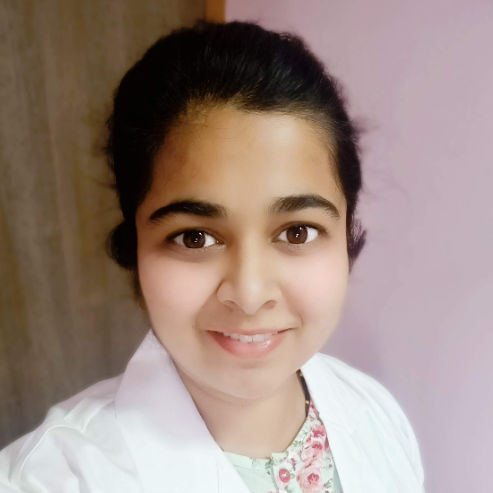
Dr Nazneen Khan
Cardiologist
7 Years • M.B.B.S, M.D (MEDICINE), DrNB CARDIOLOGY
Pune
Apollo Clinic, Viman Nagar, Pune
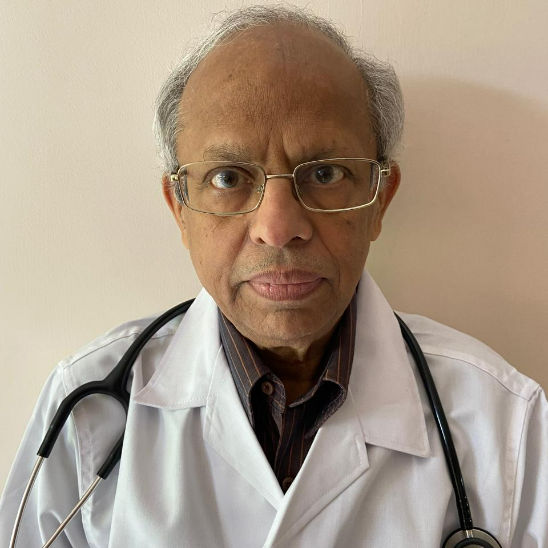
Dr. E Prabhakar Sastry
General Physician/ Internal Medicine Specialist
40 Years • MD(Internal Medicine)
Manikonda Jagir
Apollo Clinic, Manikonda, Manikonda Jagir
(150+ Patients)
Consult a Top Cardiologist for Personalised Advice

Dr. Anand Ravi
General Physician
2 Years • MBBS
Bengaluru
PRESTIGE SHANTHINIKETAN - SOCIETY CLINIC, Bengaluru

Dr. Zulkarnain
General Physician
2 Years • MBBS, PGDM, FFM
Bengaluru
PRESTIGE SHANTHINIKETAN - SOCIETY CLINIC, Bengaluru

Dr. Tripti Deb
Cardiologist
40 Years • MBBS, MD, DM, FACC, FESC
Hyderabad
Apollo Hospitals Jubilee Hills, Hyderabad

Dr Nazneen Khan
Cardiologist
7 Years • M.B.B.S, M.D (MEDICINE), DrNB CARDIOLOGY
Pune
Apollo Clinic, Viman Nagar, Pune

Dr. E Prabhakar Sastry
General Physician/ Internal Medicine Specialist
40 Years • MD(Internal Medicine)
Manikonda Jagir
Apollo Clinic, Manikonda, Manikonda Jagir
(150+ Patients)
More articles from Hypertensive heart disease
Frequently Asked Questions
What are common hypertensive heart disease symptoms?
Mild breathlessness, chest pressure with exertion, palpitations, fatigue, and ankle swelling. Red flags like severe chest pain or stroke symptoms require urgent care.
What is the blood pressure target for heart disease patients?
Many benefit from a target under 130/80 mm Hg; some may aim lower or higher depending on age, tolerance, and comorbidities. Discuss an individualized goal with your doctor.
How can I lower blood pressure naturally fast?
Short-term: reduce sodium today, go for a brisk 30-minute walk, hydrate, and avoid alcohol. Long-term: DASH diet, daily activity, weight loss, and better sleep sustain lower BP.
Do ACE inhibitors or ARBs help left ventricular hypertrophy due to hypertension?
Yes. ACEi/ARBs are effective for BP control and LVH regression; ARBs in the LIFE trial reduced LVH and stroke risk compared with a beta-blocker-based regimen [9].
When should I use ambulatory blood pressure monitoring?
If white-coat or masked hypertension is suspected, or if readings are inconsistent. ABPM gives a 24-hour picture to guide treatment.
